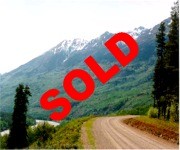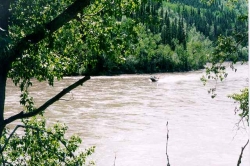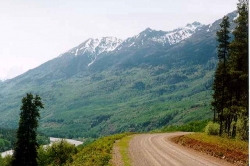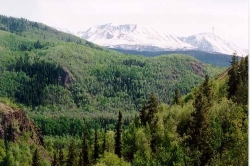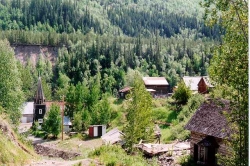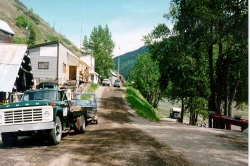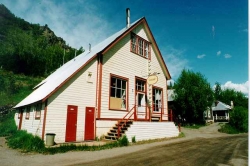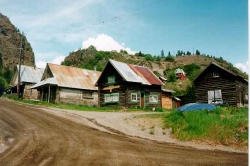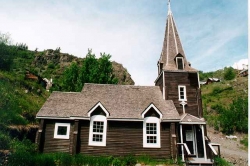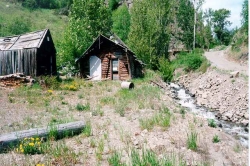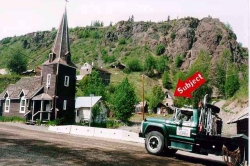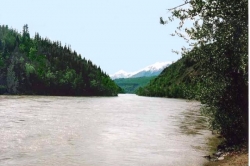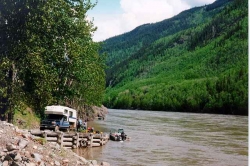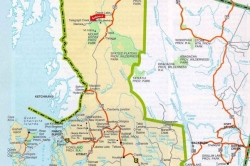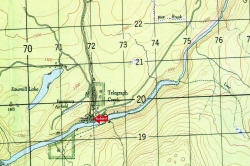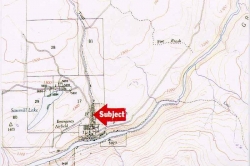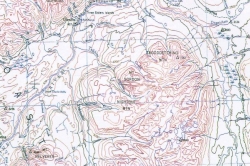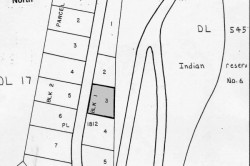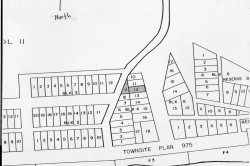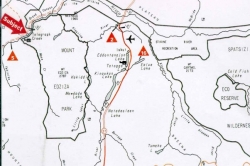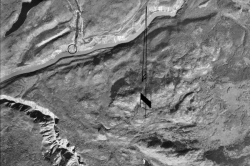Telegraph Creek
| Listing Number: | PR1-3 |
|---|---|
| Size: | Lot 9 = 38’ x 75’ x 80’ and Lot 12 = 30’ x 69’ |
| Map Reference: | 104G |
| Price: | SOLD |
| Legal: | Lots 9 & 12 – Block 4, DL 11, Plan 975, Land District 06. |
| Description: | The lots are located in the old part of Telegraph Creek where many of the original buildings remain from the gold rush days and date back to the turn of the century. The former Hudson’s Bay Company Store has been recognized as a B.C. Heritage building and now operates as the Stikine River Song Lodge, offering wilderness boat tours, and comprising a general store, café and lodge. Lot 12 – This lot is located adjacent to Telegraph Creek. The creek runs past the lot some 30 feet to the east. Beautiful, snow-fed Telegraph Creek runs into the mighty Stikine River, some 400-500 feet to the south. The lot is level and slightly raised above the lots to the south. There is an old log home on the property but part of the roof has collapsed. Lot 9 – This lot has, possibly, an old shed on it which is of little value. The lot is flat and sits adjacent to lot 12. The beautiful old historic church St. Aidan’s Anglican sits 100 feet south of lots 9 and 12; the two-story old hospital building across the creek to the east is occupied and in excellent shape. Trina Anne Excursions, a river tour operator is south of the lots. That building, well over 100 years old, was once the local saloon. One old building just west of lots 9 and 12 has a sign advising a company started in 1886. Four hundred feet south of the lots is a boat launching ramp where not only the river boat excursions launch their boats but also many fishermen and hunters. The view from lots 9 and 12 is of the beautiful Stikine River in the foreground with rolling hills and snow-capped mountains in the distance. |
| Location: | This property is located in the town of Telegraph Creek in north-western British Columbia. Telegraph Creek is 115 km (71 miles) south-west of Dease Lake on Highway #37, or 260 km (161 miles) up-river or 200 km (124 miles) by air from Wrangell, Alaska. |
| Access: | From Kitwanga head north on Hwy #37 for 490 km (304 miles) to the town of Dease Lake. At Dease Lake follow the Telegraph Creek road for 115 km (71 miles) south-west over a very scenic route passing native settlements, caribou meadows, lava beds and ranch land. |
| Recreation: | Spatsizi Plateau Wilderness Park is B.C.’s second largest provincial park with more than 3,000 square miles of lush valleys, uncut forests, wild rivers, rolling tablelands and rugged mountains. Large wildlife populations, including woodland cariboo and over 140 species of birds, including gyrfalcons. The park offers excellent wilderness recreation for the experienced outdoors person. Two old trails from Telegraph Creek give access to the Mount Edziza Provincial Park which surrounds some of Canada’s most recent volcanic activity and contains many unique geological formations. The largest river in the area is the Stikine. This is an excellent area for river rafting with the exception of west of Hwy #37 where the river is impassable for 100 km through the Grand Canyon, which is one of the largest and most beautiful canyons in Canada. Water pounds through a narrow channel between 300 metre high volcanic rock walls. The Stikine River offers a variety of fishing opportunities; all five species of Pacific Salmon spawn in the River. Fishing for Spring (King/Chinook) salmon is excellent from late June through mid July. Also in the summer, there are Dolly Varden, rainbow, and cutthroat trout as well as the occasional grayling, whitefish, and lin cod. There are steelhead in the river with the run beginning in the lower river in August. As well, many excellent fishing lakes exist in this area. The area offers abundant and diverse wildlife including moose, caribou, grizzly and black bear, lynx wolf, mountain goat and sheep. Other recreational pursuits include guided river raft trips, limitless hiking, gold panning, hunting, fishing for Stikine salmon and camping. |
| Services: | Power and phone. |
| Area Data: | The main industry of Telegraph Creek (pop. 300) is guiding, with some mining exploration. It’s the only town on the 600 km long (372 miles) Stikine River. Telegraph Creek has an air strip, store and café, post office, police station, nursing station, school, church and a small museum. Information is also available at the Tahltan Band Council office on the hill above the “downtown” area. Despite Telegraph Creek’s northerly latitude the climate is temperate and has a sufficient growing season for farming. Many residents grow their own produce. Stikine salmon is enjoyed by everybody. |
| History: | Telegraph Creek has been continuously settled by non-native peoples since placer gold was found a few kilometres downstream in 1861. As the farthest navigable point on the Stikine for steamships, the community was well situated for such enterprises as Western Union’s overland telegraph to link New York and Paris. Telegraph Creek might have been the Northwest’s great communications centre by 1866 if the transatlantic cable, completed the same year, had not made the overland line redundant. Less than a decade later, Telegraph Creek was rejuvenated as a gateway to the Cassiar gold rush and in 1897, gateway to the Klondike. In 1901 another telegraph line, linking Klondike with the south, was strung into Telegraph Creek, but brought few changes to the village. Benefits came after 1928 with improvements to the road east to Dease Lake and during World War II, with the construction of the Alaska Highway. More recently, the community has been simply a refuge for people who prefer fewer links with the world beyond. Another mini-boom is looming, though, and it’s because of gold again. Mining companies are moving in, 100 kilometres south, between the Scud and Iskut rivers. |
| Vegetation: | Small alder and brush. |
| Taxes: | Lot 9 & 12 combined $8.93 (2007) |
| Zoning: | Not zoned.
|
| Sold Date: | 15/05/1997 |
